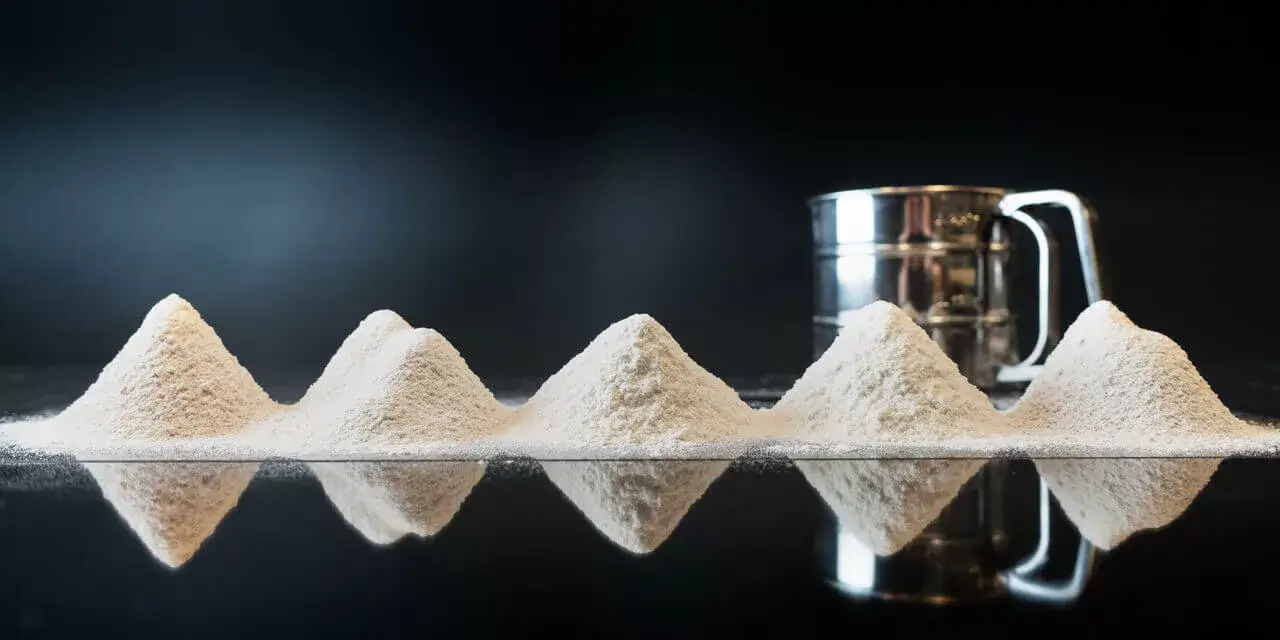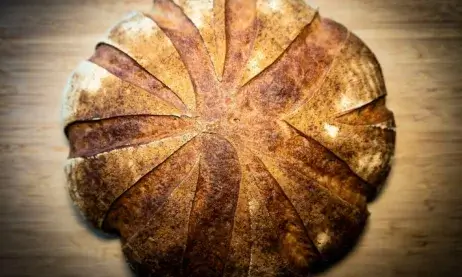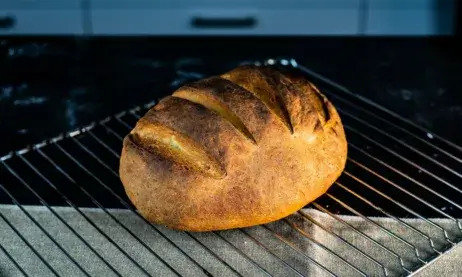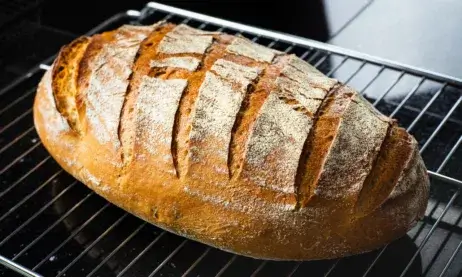Ever wondered why your homemade bread doesn’t quite match up to the one from your favorite bakery in another country? The secret could lie in the flour you’re using. Different countries have unique naming conventions for flour, and this can significantly impact your baking results.
Navigating the world of baking can be a bit like being a tourist in a foreign country. You’re faced with different types of flour, each with its own unique naming convention. It’s easy to feel lost. But don’t worry, that’s where this guide comes in.
In this comprehensive guide, I’ll be sharing my knowledge about different types of flour and their naming conventions across various countries. So, whether you’re a professional baker or a home cook looking to recreate a foreign recipe with local ingredients, this guide is your passport to global baking success. Ready to embark on this flour-filled journey? Let’s get started!
*Keep in mind that all our recipes are going to use the US naming convention.
- Types of Flour
- All-Purpose Flour
- Bread Flour
- Cake Flour
- Pastry Flour
- Whole Wheat Flour
- Gluten-Free Flour
- Naming Conventions in Different Countries
- United States
- United Kingdom
- Germany
- Italy
- France
- Table Overview
- Conclusion
- Frequently Asked Questions (FAQ)
TYPES OF FLOUR
Flour is typically made by grinding grains such as wheat, rice, maize, and others. Depending on the type of grain used and how it’s processed, different types of flour are produced. Here are some of the most common types of flour:
ALL-PURPOSE FLOUR
All-purpose flour is the most common type of flour in the United States. It’s a blend of hard and soft wheat, which gives it a medium protein content of about 10-12%. All-purpose flour can be used for a variety of dishes, from bread to cakes and cookies.
BREAD FLOUR
Bread flour is a high-protein flour, typically made from hard wheat. It has a protein content of around 12-14%, which makes it ideal for making bread. The high protein content gives bread its structure and chewy texture.
CAKE FLOUR
Cake flour is a low-protein flour, typically made from soft wheat. It has a protein content of around 7-9%, which makes it ideal for making cakes and other baked goods that require a tender, delicate texture.
PASTRY FLOUR
Pastry flour is a low-protein flour, similar to cake flour, but with a slightly higher protein content of around 9-10%. It’s ideal for making pastries, such as pie crusts and croissants.
WHOLE WHEAT FLOUR
Whole wheat flour is made by grinding the entire wheat kernel, including the bran and germ. It has a higher protein content than all-purpose flour and a nuttier flavor. It’s a healthier alternative to all-purpose flour since it contains more fiber and nutrients.
GLUTEN-FREE FLOUR
Gluten-free flour is made from grains that do not contain gluten, such as rice, corn, and sorghum. It’s an excellent alternative for those who have celiac disease or gluten intolerance.
NAMING CONVENTIONS IN DIFFERENT COUNTRIES
Flour is a staple ingredient in cuisines all over the world, and each country has its own naming conventions. Here are some examples:
UNITED STATES
As mentioned earlier, all-purpose flour is the most common type of flour in the United States. However, there are other types of flour available, including bread flour, cake flour, and pastry flour.
UNITED KINGDOM
In the United Kingdom, the most common type of flour is plain flour, which is similar to all-purpose flour. Self-raising flour, which contains baking powder, is also popular.
GERMANY
In Germany, the most common type of flour is Type 405, which is equivalent to all-purpose flour in the United States. Other types of flour include Type 550, which is similar to bread flour, and Type 405, which is similar to cake flour.
ITALY
In Italy, the most common type of flour is Type 00, which is a finely ground flour made from soft wheat. It’s ideal for making pasta and pizza dough.
FRANCE
In France, the most common type of flour is Type 55, which is equivalent to all-purpose flour in the United States. Other types of flour include Type 45, which is similar to cake flour, and Type 65, which is similar to bread flour.
TABLE OVERVIEW
| US | UK | Germany | Austria | Switzerland | Italy | France | Ash | Protein |
| Pastry / Cake | Soft / Patent | Weizen 405 | W480 / Glatt | Spezial | 00 | 45 | 0.4% | 8-10% |
| All-purpose | Plain / White | Weizen 550 | W480 / Griffig / Doppelgriffig | Weiß | 0 | 55 | 0.5-0.58% | 9-11% |
| High-gluten / Bread | Hard / Lightbrown | Weizen 812 | W700 | Halbweiß | 1 | 80 | 0.64-0.89% | 11-14% |
| First clear | Very hard / Brown | Weizen 1050 | W1600 | Ruch | 2 | 110 | 1.05% | 13-15% |
| Whole wheat | Wholemeal | Weizenvollkorn 1600 | W1800 | Vollkorn | Integrale | 150 | 1.6% | ~13% |
| Wheat meal | – | Weizenschrot | Weizenschrot | – | Farina di grano | Farine de blé | 1.7% | ~14% |
| White rye | – | Roggen 815 | – | 720 | Segale a luce bianca | 70 | 0.815% | – |
| Light rye | – | Roggen 997 | R960 | – | 0 | 85 | 0.997-1.09% | ~8% |
| Rye | Rye | Roggen 1150 | – | 1100 | 1 | 130 | 1.15% | – |
| Medium rye | – | Roggen 1370 | – | – | – | 130 / 170 | 1.37% | – |
| Dark rye | – | Roggen 1740 | R2500 | – | – | 170 | 1.74% | – |
| Pumpernickel | – | Roggenvollkorn | Roggenvollkorn | 1900 | Integrale | – | – | – |
| Cracked rye | – | Roggenschrot | – | – | Segale incrinata | – | – | – |
| White spelt | – | Dinkel 630 | D700 | Weiß | Bianca | – | <0.7% | 6-11% |
| – | – | Dinkel 812 | – | – | – | – | 0.71-0.9% | – |
| – | – | Dinkel 1050 | D1500 | Ruch | – | – | 0.91-1.20% | – |
| Whole spelt | Wholegrain Spelt | Dinkelvollkorn | – | Vollkorn | Integrale | – | 0.55% | 6-9% |
| Spelled meal | – | Dinkelschrot | – | – | – | – | – | – |
| Soft wheat semolina | – | Weichweizengrieß | – | – | – | – | – | – |
| Hard wheat semolina | – | Hartweizengrieß | – | – | – | – | – | – |
| Gluten-Free | Gluten-free | Glutenfrei | Glutenfrei | Glutenfrei | Farina senza glutine | Farine sans gluten | 0.1-1.5% | 6-9% |
TABLE OVERVIEW – FURTHER COUNTRIES
| US | Spain | Portugal | Netherlands | Poland | Czech Republic | Argentina | Japan | China |
| Pastry / Cake | 45 | 45 | Zeeuwse Bloem | Tortowa | Hladká mouka výběrová 00 | 0000 | Hakurikiko – 薄力粉 | DiJinMianFen – 低筋麵粉 |
| All-purpose | 55 | 55 | Patentbloem | Luksusowa | Hladká mouka | 000 | Churikiko – 中力粉 | ZhongJinMianFen – 中筋麵粉 |
| High Gluten / Bread | 80 | 80 | Tarwebloem | Chlebowa | Polohrubá mouka | 00 | Kyorikiko – 強力粉 | GaoJinMianFen – 高筋麵粉 |
| First Clear | 110 | 110 | Gebuilde Bloem | Sitkowa | Hrubá mouka | 0 | Kyorikimatsufun – 強力末粉 | TeGaoJinMianFen – 特高筋麵粉 |
| Whole Wheat | 150 | 150 | Volkornmeel | Razowa / Graham | Celozrnná mouka | 1/2 | Zenryufun – 全粒粉 | – |
We don’t guarantee 100% accuracy for the displayed data. It is a collection based on the following sources and translations from different dictionaries:
- Flour – Wikipedia
- Internationale Mehltypen
- European flour numbering system
- German flours
- German vs American flour equivalents
If you have suggestions for improvements or additional data we could add, don’t hesitate and write a comment or contact us directly.
Conclusion
In conclusion, flour is a versatile ingredient that can be used for a variety of dishes. However, the naming conventions for flour can differ from country to country. Understanding the different types of flour and their properties can help you choose the right flour for your recipe. Whether you’re making bread, cake, or pasta, there’s a type of flour that’s perfect for your needs.
FREQUENTLY ASKED QUESTIONS (FAQ)
What are the 4 main types of flour?
The four main types of flour are all-purpose flour, bread flour, cake flour, and pastry flour.
Which flour is best for bred?
Bread flour is the best flour for making bread. Its high protein content gives bread its structure and chewy texture.
Which flour is best for rolls?
Pastry flour is the best flour for making rolls since it has a slightly higher protein content than cake flour, which gives the rolls a tender, delicate texture.
Which flour is best for cake?
Cake flour is the best flour for making cakes since its low protein content produces a tender, delicate crumb.
Which flour is best for cookies?
All-purpose flour is the best flour for making cookies since it produces a chewy texture and a soft, tender crumb.
Which flour is healthy?
Whole wheat flour is the healthiest flour since it contains more fiber and nutrients than other types of flour.
What is the easiest flour to digest?
Gluten-free flour is the easiest flour to digest since it doesn’t contain gluten, which can be difficult for some people to digest.





